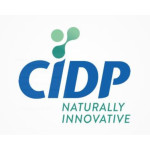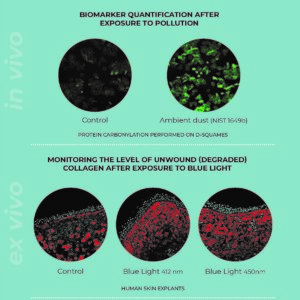How to in-vitro, ex-vivo and in-vivo assess the Effect of Exposome? CIDP Webinar with Skinobs 16th November at 3 pm [CET]
2 November 2021
Discover the innovative Preclinical & Clinical methodologies that CIDP develops to answer your need of claim substantiaition. Skinobs is glad to offer this webinar with CIDP presenting innovatives perspectives to evaluate the effect of the exposome on the Skin.
Webinar organization
- Date:
- Time: 15:00 pm – 16:00 pm
- Duration : 45 minutes and 15 minutes Questions and answers session
- Location: virtual conference. Please send an email to Ophélie at orebillard@skinobs.com
In this webinar “How to in-vitro, ex-vivo and in-vivo assess the Effect of Exposome?“ Dr. Veronique Newton will present measurement methods to investigate the effect of Exposome on the skin. Among other things, the following topics will be discussed.
- The extrinsic stressors and detrimental effects of the exposome: from atmospheric pollution and light, UVR and blue light
- Innovative methodologies for the in-vitro, ex-vivo and in vivo investigation
- Details of the Controlled Pollution Exposure System (CPES),
- What biomarkers ?
The human skin is constantly exposed to external stressors or exposome such as UV radiation (UVR), atmospheric pollution, blue-light or high energy visible light (HEV) light emanating from increased exposure to digital devices because of an increased work from home culture and time spent in front of screens to stay connected with others. The stressors arising from atmospheric pollution and light (UVR and blue light) can penetrate the skin stratum corneum triggering an oxidative stress, premature skin ageing and hyperpigmentation. Thus, the detrimental effect of these exposome is becoming more and more obvious.
Forerunner in the cosmetic industry testing, CIDP proposes innovative preclinical and clinical tests to evaluate the efficacy of cosmetic products, raw ingredients in their ability to provide a protective and/or repairing effect against pollution and/or blue-light. Additionally, the mechanism underlying exposure to blue light can also be studied using CIDP models that emits blue light obtained from the sun or which mimics blue light obtained from electronic devices.
These cost-effective models can be used for screening of raw materials or finished products, for exposome protection or repairing claim substantiation.
The protective and repairing effect of cosmetic products can further be confirmed in in vivo model by expert clinical methodologies, instrumental analysis and biological markers analysis.









 Follow us on Linkedin!
Follow us on Linkedin!
You must be logged in to post a comment.